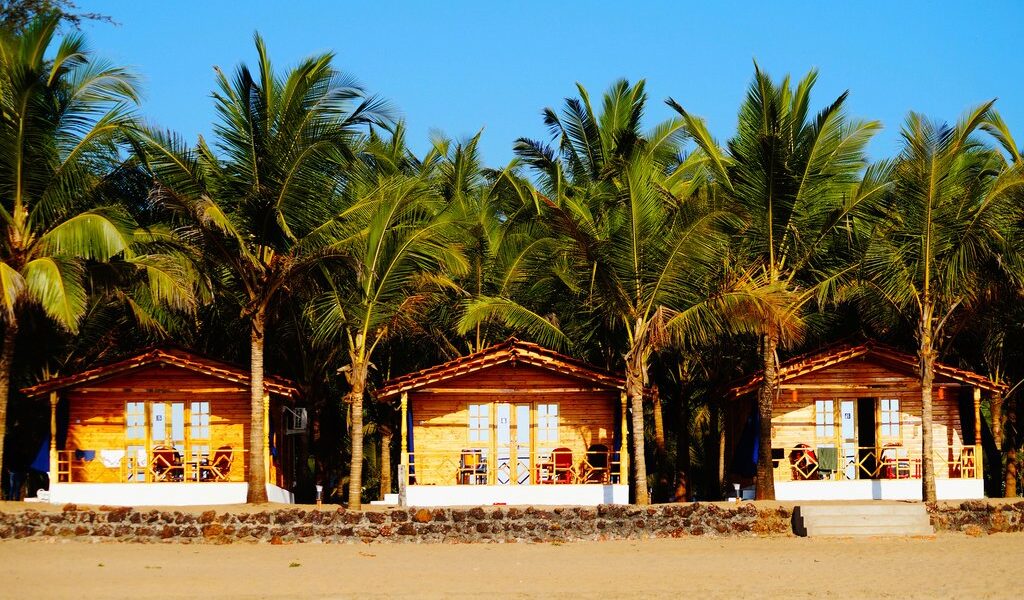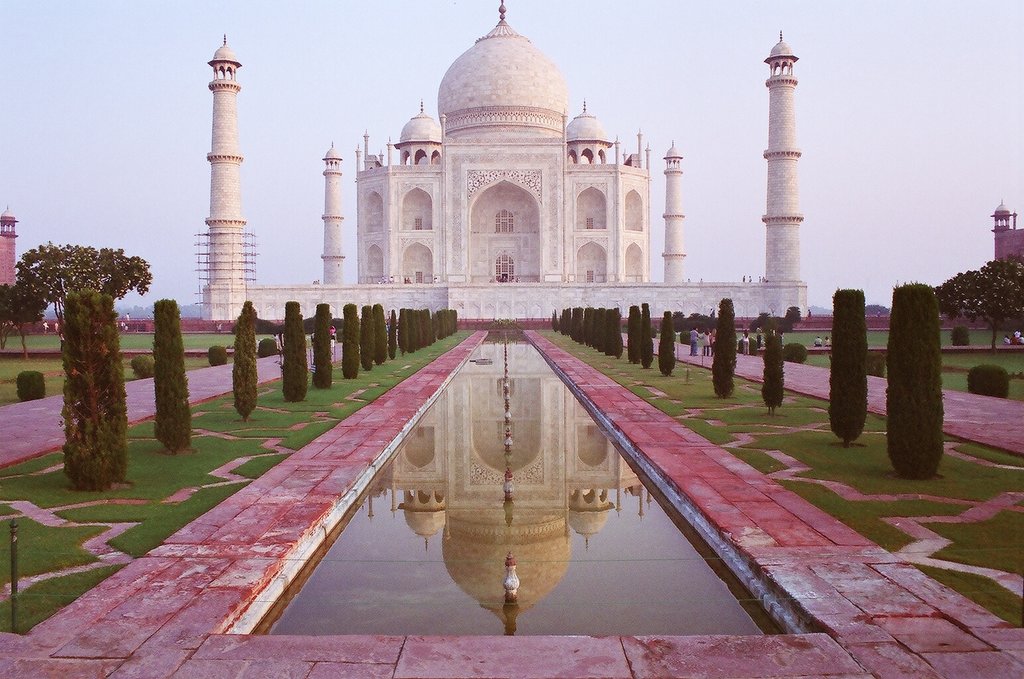
From the famously erotic temple carvings at Khajuraho to star-crossed lovers in today’s Bollywood films, India is in love with romance—and it has the honeymoon spots to show for it. The country rolls out the red carpet to honor the newly betrothed, so even if you didn’t have a destination wedding, you can still have an Indian honeymoon.
The very essence of India is often captured in the vibrant spectacle of a wedding. Across the nation, in picturesque locales that seem plucked from a storybook, newly married women can be identified by the intricate henna designs adorning their hands and the delicate, melodic sound of their red bangles gently tinkling with every move. With dazzling fireworks displays that light up the night sky, the majestic presence of white horse-drawn chariots, and guest lists that often swell to thousands of attendees, Indian weddings are grand, unforgettable celebrations. These joyous occasions can stretch over several days, a vibrant tapestry of rituals and merriment, culminating in the eagerly anticipated honeymoon. Join the throngs of blushing newlyweds as they embark on their own romantic adventures in these enchanting storybook destinations, and perhaps even find inspiration to celebrate the genesis of your very own enduring love story.
Goa
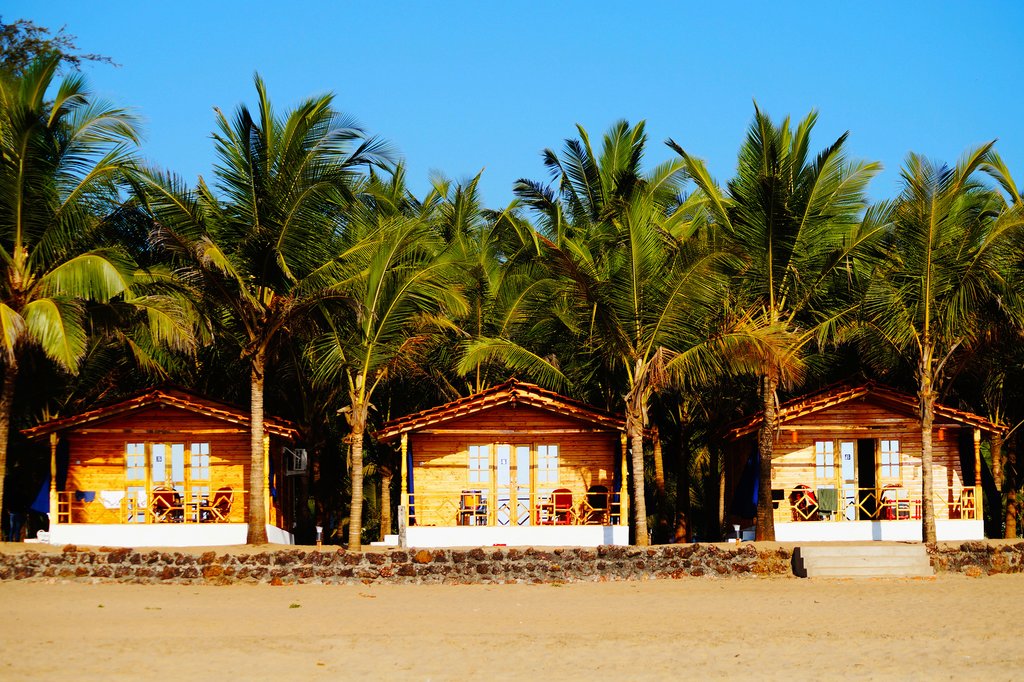
It comes as no surprise that the idyllic, picture-perfect landscape of Goa, with its rich history as a former Portuguese colony, has become a magnet for honeymooners, especially during the winter months. The gentle swaying of fringed palm trees, casting dappled shadows on the pristine beaches, combined with the charming Old World architecture and ambiance, creates a truly heavenly setting. It’s the perfect backdrop to celebrate the blossoming of young love, or at the very least, the beginning of a beautiful young marriage.
However, it’s important to be aware that the beach scene in this captivating state is generally divided into two distinct areas, each offering a unique atmosphere and appeal. North Goa tends to attract a more energetic and often rowdier crowd, known for its vibrant nightlife and party scene. In contrast, South Goa is generally more tranquil and relaxed, catering more specifically to couples seeking a romantic getaway and families looking for a peaceful vacation. Unless you’re specifically hoping to spend your honeymoon immersed in the clubbing scene – and there’s certainly nothing wrong with that if it’s your preference – you’ll likely find the South to be a more suitable and appealing option. Consider renting a charming beach hut along the pristine white sands of quiet, secluded Agonda, where the gentle lapping of the waves will lull you into relaxation. Or, if you prefer a bit more activity and social interaction, join the cheerful bustle of sunbathers in the lively and romantic atmosphere of Colva.
Beyond its stunning coastline, Goa offers a wealth of historical and cultural attractions. History enthusiasts and art lovers will find a great deal to appreciate and savor in Velha Goa, also known as Old Goa, the colony’s original capital dating back to the 15th century. This historically significant area is now recognized as a UNESCO World Heritage site, a testament to its rich cultural heritage. Spend your days daydreaming amidst the picturesquely crumbling baroque cathedrals, such as the pristine, powder-white facade of Se Cathedral, a majestic structure that dominates the landscape, or the imposing Basilica of Bom Jesus, which not only houses significant religious relics but also boasts an impressive art museum. Take the time to observe the local fishermen as they haul in their daily catch along the sun-kissed banks of the Mandovi River, a scene that embodies the timeless charm of Goan life.
Shimla
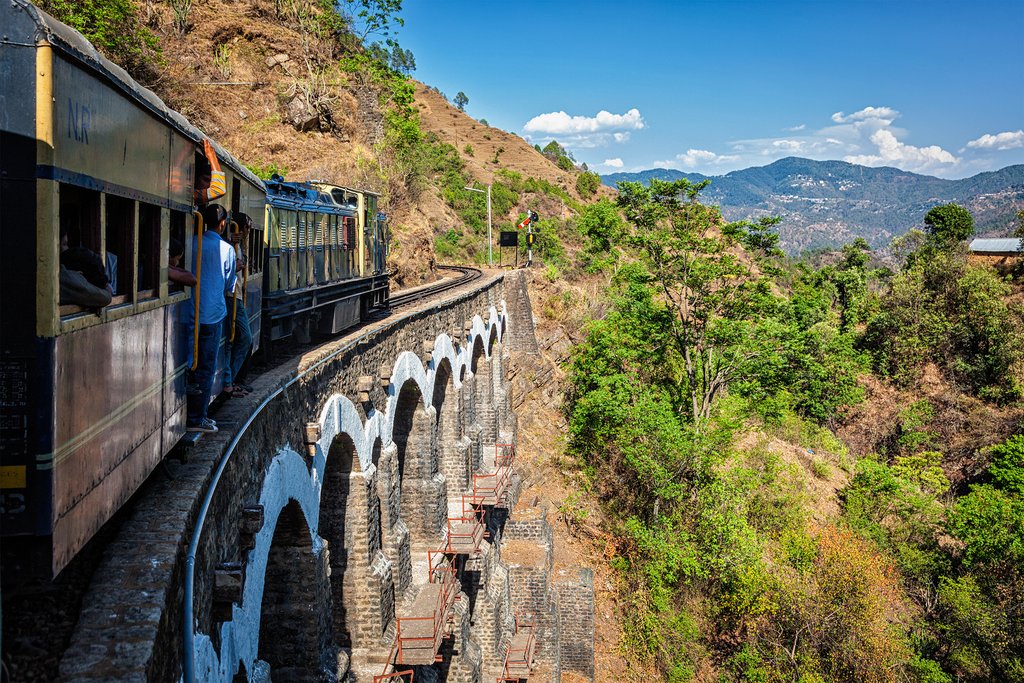
While its name might suggest a playful appeal geared towards children, the Kalka-Shimla toy train offers a uniquely scenic and atmospheric journey through the breathtaking mountains. The route was initially established in 1898, primarily for the British seeking respite from the intense heat of the plains during the summer months. Today, it stands as one of only four mountain railways in India, all of which are proudly protected as UNESCO World Heritage sites, a testament to their historical and cultural significance.
Embark on a captivating chug through dense deodar forests, across elegantly sloping stone bridges that seem to defy gravity, and ascend fog-covered mountains that evoke a sense of mystery and wonder. Your destination is the enchanting mountain hill station of Shimla, which once served as the summer capital of the British Raj, a period of significant historical importance. Some luxury versions of the classic locomotive even offer private, opulent compartments with attached bathrooms and delectable meals, adding an extra touch of comfort and sophistication to your journey.
Upon arriving at the mountain hill station of Shimla, perched at an elevation of approximately 7,500 feet, you’ll be greeted by the refreshing crispness of the mountain air. Immerse yourselves in the beauty of the misty evergreen pine forests, where the scent of pine needles fills the air. Wake up early to witness the breathtaking sunrise views of the surrounding snow-capped peaks, painting the landscape in hues of gold and crimson. For an authentic nature immersion, consider renting a cozy wooden cabin, where you can truly disconnect from the hustle and bustle of city life and reconnect with the tranquility of nature. Embrace the Bollywood spirit and reenact your favorite romantic song sequences by enjoying a leisurely horseback ride through the stunning Himalayan foothills.
Take the opportunity to explore and appreciate the unique fusion of British and Indian heritage that permeates the town. The Viceregal Lodge, a magnificent structure built in 1888, once served as the ornate and fortress-like residence of the British Viceroys. Perched atop Shimla’s second highest point, it offers not only a glimpse into the opulent past but also provides a stunning backdrop for memorable photographs.
Kashmir
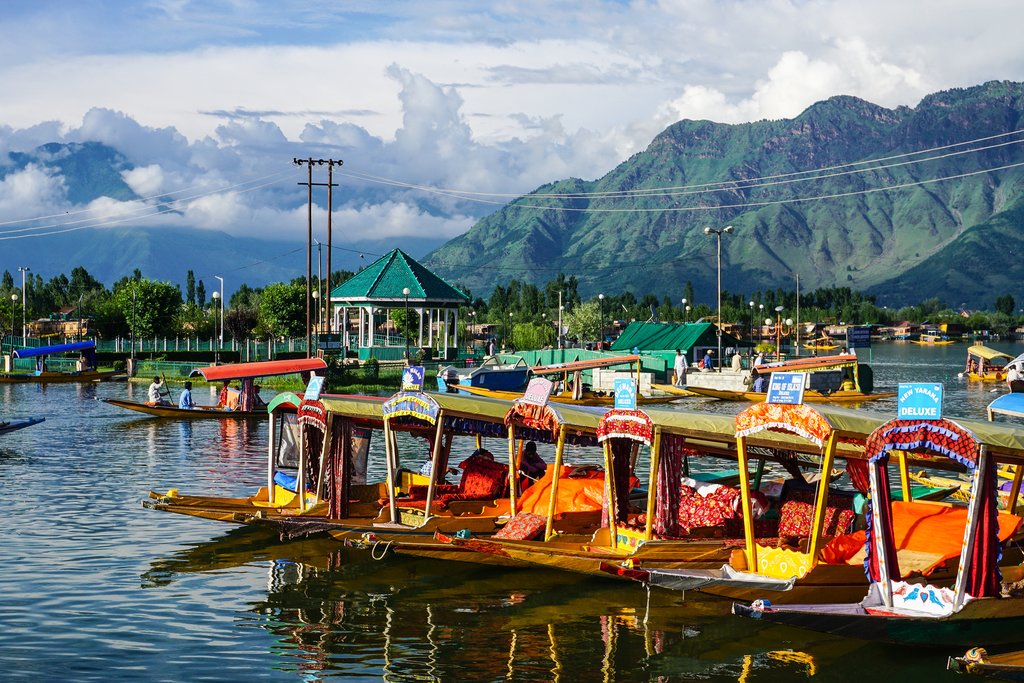
“If there is paradise on earth, it is here, it is here, it is here,” the Persian poet Jami famously proclaimed, encapsulating the unparalleled beauty and ethereal charm of Kashmir.
It’s easy to understand how these breathtaking landscapes could inspire such poetic expressions. In the spring season, the valley bursts into a kaleidoscope of colors as wildflowers bloom in abundance, painting the rolling green hills with vibrant hues. Puffy white clouds drift lazily across the sky, adding to the dreamlike atmosphere. Love truly permeates the air in this enchanting region. In the capital city of Srinagar, the 17th-century gardens of Shalimar Bagh – whose name translates to “Abode of Love” in Sanskrit – were meticulously crafted by the Mughal ruler Shah Jahan, the same emperor who commissioned the Taj Mahal as a timeless monument to his beloved wife.
Lose yourselves in the serenity of the scented gardens, where the fragrant blooms will awaken your senses. Indulge in the rich and flavorful Mughal-inspired dishes, a culinary tradition that reflects the region’s rich cultural heritage. Venture out to explore the surrounding hill stations, such as the mountainous Gulmarg, a well-known destination for skiing enthusiasts during the winter months. Or, simply relax and watch the majestic mountains mirrored in the tranquil surface of Dal Lake. Consider renting a floating houseboat, a unique and unforgettable experience that allows you to doze peacefully while overlooking the serene and lily-covered waters.
Udaipur
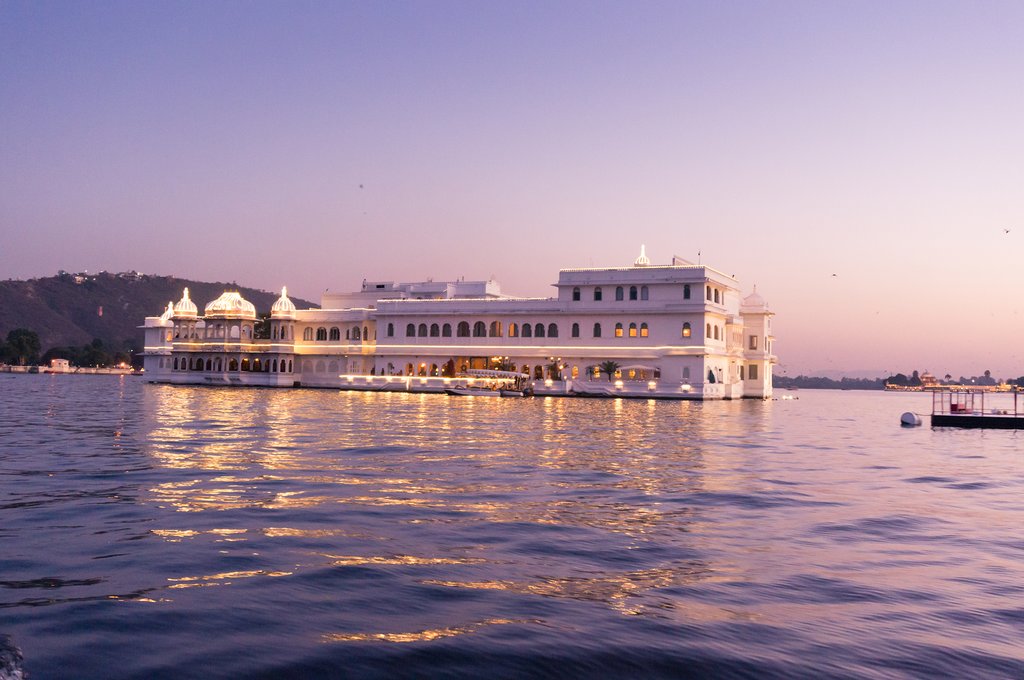
It’s not every day that you have the opportunity to stay as a guest within the walls of a genuine palace, but in Rajasthan’s dreamy “City of Lakes,” Mewar royal residences have been lovingly converted into luxurious hotels, offering you the chance to experience a taste of royal life. Indulge in a bit of regal comfort and treat yourselves to a honeymoon that feels like it’s been plucked straight from another age.
With their ornate interiors, meticulously crafted details, and the presence of eager-to-please attendants who anticipate your every need, you’ll find yourselves living as decadently as Udaipur’s past rulers once did. Enjoy romantic candlelit, multi-course meals served lakeside on soft, cushioned beds, while the full panorama of the city twinkles and shimmers below, creating a truly magical atmosphere.
Often compared to the romantic canals of Venice, the floating, waterside city of Udaipur is also a vibrant arts hub and a popular venue for catching traditional Rajasthani music performances. If you can manage to tear yourselves away from the luxurious comfort of your palatial digs, be sure to squeeze in a live cultural performance, featuring captivating dancing, traditional puppetry, or soulful folk songs that tell the stories of the region’s rich history and culture.
Khajuraho
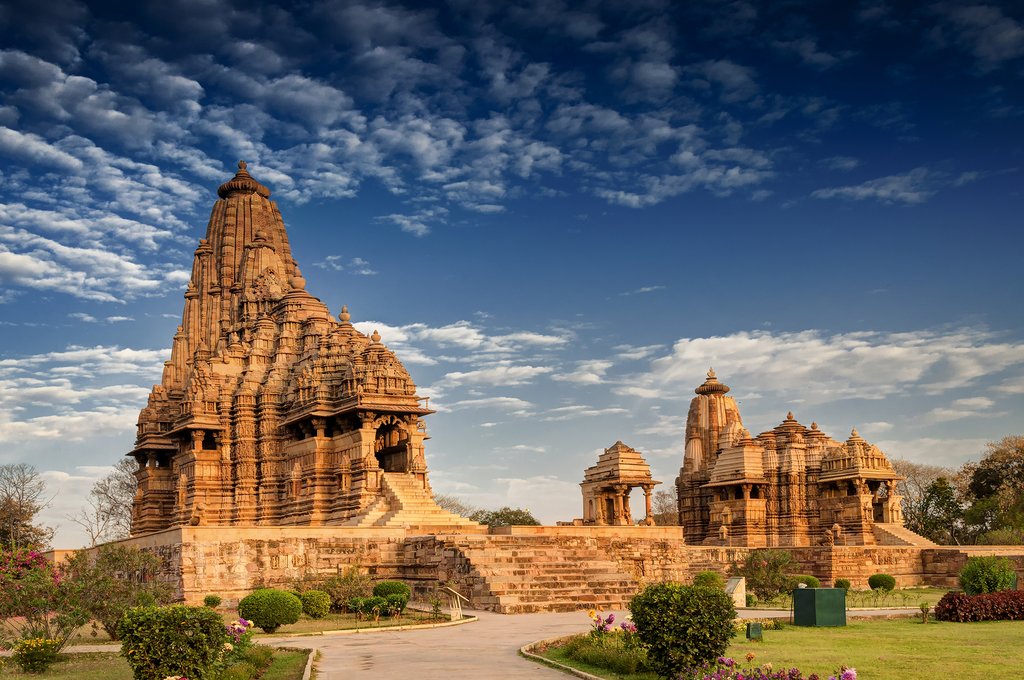
These days, India might seem a bit more reserved and buttoned up when it comes to matters of the heart – or, more importantly, the bedroom. Until recently, Bollywood romances even adhered to a self-imposed ban on kissing, a reflection of the prevailing cultural norms. However, this 10th-century Jain and Hindu temple complex, located in the central state of Madhya Pradesh, offers a fascinating glimpse into the past, revealing that the Chandela kingdoms of that era did not share the same taboos and inhibitions.
Although erotic sculptures constitute only a small fraction of the intricate temple carvings, the voluptuous, cavorting figures, often posed in elaborate and blush-worthy tantric tableaus, are undoubtedly the most famous and widely recognized artworks on display. These depictions of intimate relationships offer a unique perspective on the cultural values and artistic expressions of the time.
However, it’s important to remember that the fragrantly detailed carvings are not simply intended to be titillating; they have a higher spiritual purpose. Scholars have suggested that the lascivious couplings depicted in the sculptures represent our own unions with the divine, a symbolic representation of the connection between the human and the spiritual realms. Whether you agree with this interpretation or draw your own conclusions, the UNESCO World Heritage site is undoubtedly well worth a visit, offering a unique and thought-provoking glimpse into the past.
Agra
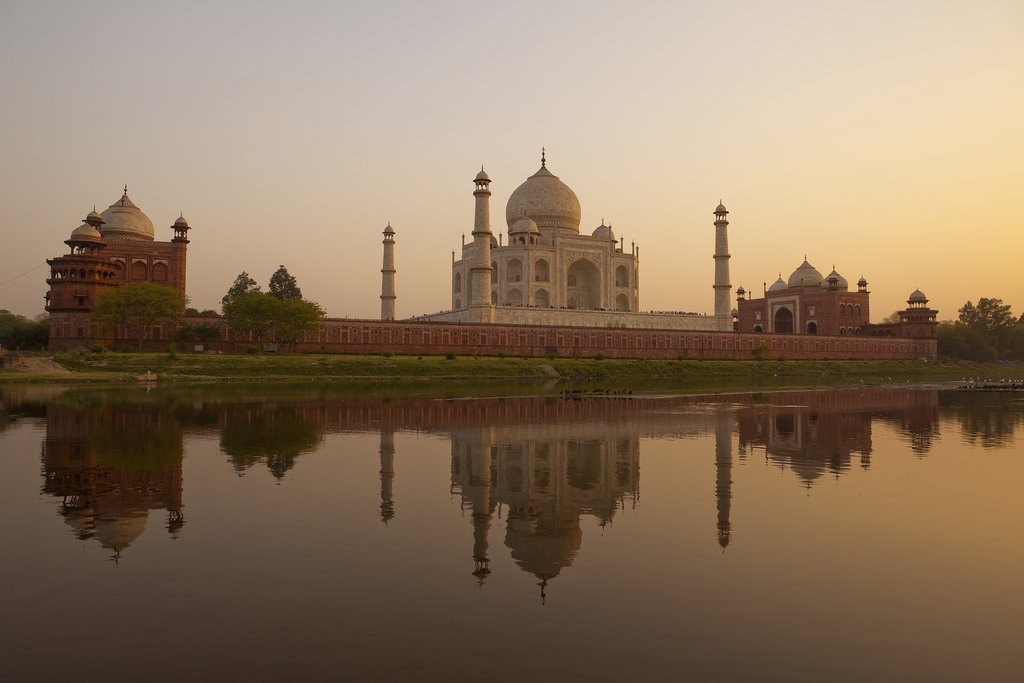
It might not be the most unconventional or original choice, but this iconic site unquestionably deserves every bit of its well-earned fame and recognition. In 1632, the Mughal emperor Shah Jahan, deeply grief-stricken by the loss of his beloved second wife, a Persian princess named Mumtaz Mahal, commissioned the construction of a gleaming marble mausoleum to entomb her remains. Twenty-two years later, after employing the skills of tens of thousands of stonecutters, artisans, and craftsmen who painstakingly carved and painted his vision to life, the Taj Mahal was finally completed, a testament to his enduring love and devotion.
While its origins might initially seem a tad macabre for a honeymoon destination, the domed love palace, with its meticulously maintained tidy fountains, its romantic gardens brimming with fragrant blooms, and its overall aura of timeless elegance, continues to enchant and inspire visitors from around the globe. And what could be a more fitting way to celebrate one’s lifelong vows and commitment than by touring a magnificent monument dedicated to eternal spousal devotion, a symbol of love that has transcended centuries?
Agra is a pretty unassuming town apart from the Taj, and is often overlooked as a place of much interest. Therefore most tourists visit as day trippers. But you can also work in a visit to the nearby ruins of Fatehpur Sikri, a 16th-century walled Mughal city – not quite as swoon-worthy as the Taj Mahal, perhaps, but no less spectacular in its own right. It offers a fascinating glimpse into the architectural grandeur and historical significance of the Mughal Empire, providing a deeper understanding of the region’s rich cultural heritage.
The word count of the new text is 1576 words.
B-1204

